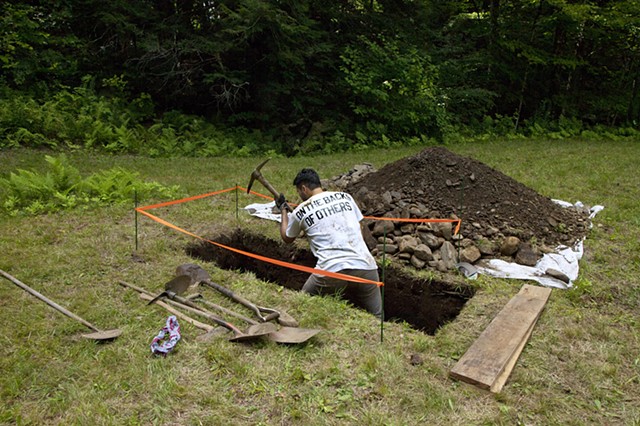Easement
THE OPPOSITE OF PROPERTY
Sample Text - In Progress
Easement (Vermont 1) began its conception from 2015 to 2016 with the following broad thoughts:
What is the opposite of property? Can this opposite be legally quantified?
What is something before it becomes property? Is this status legally recognized?
What are the qualities of pre-ownership?
If property renders something alienable (able to be sold/transferred), is the inability to sell or transfer a quality of pre-ownership?
Ultimately, can something recognized as property be returned to a fully unowned, pre-property state?
In this 2015/2016 time frame, a cross section of realities charged the political and cultural landscape including the populist rise in Brexit and the United States presidential election, the Dakota Access Pipeline Standing Rock protests and the continued murder of black men and women by police amplified by Black Lives Matter. Each of these events provide a distinct lens on the claims and power structures produced through property, its creation and management, and its role as a primary conduit for the racism, colonialism and class inequities embedded in our legal and cultural structures.
Beginning in 2013, Black Lives Matter emerged as a consolidated response to the continued murder of black men and women by police and the structural devaluing of people of color. For each new victim a common thread emerged: the role that property and its management played as catalyst for the events ending in black death. This is not to detract from abject racism but to acknowledge the conveyance through which racism and force intersected; the circuit in which those systems flowed and were initially expressed. For Trayvon Martin it was Florida’s Stand-your-ground law that allowed George Zimmerman to confront, harass and murder Martin on private property, solely based on Zimmerman’s personal perception of threat and claim on ‘place’ - despite the fact Martin had equal claim to said ‘place’ as he was staying with his father’s fiancee and walking home. For Eric Garner it was the management of commodities (“loosie” single cigarettes) and unlicensed vending in public that justified police engagement ending in his murder. For Philando Castile it was a combination of a broken taillight traffic violation, a concurrent robbery report in the area for which his “wide-set nose” allegedly made him a suspect and ultimately his personal ownership and possession of a gun that set the stage for racism to join authority and murder an innocent man in front of his girlfriend and daughter.
In each of these cases, property, its management and enforcement set the stage for authority to enforce a hierarchy of rights affirmed by law yet highly socialized. Perhaps most disturbingly exemplified in the case of Philando Castile, his legal ownership of a gun was assumed to be mere ‘possession’ - a distinction which implies criminality, ‘justified’ intervention and stripped him of all recourse guaranteed by full ‘ownership,’ including the right to possess and carry within the proper permits and local laws.
Sample Text - In Progress
